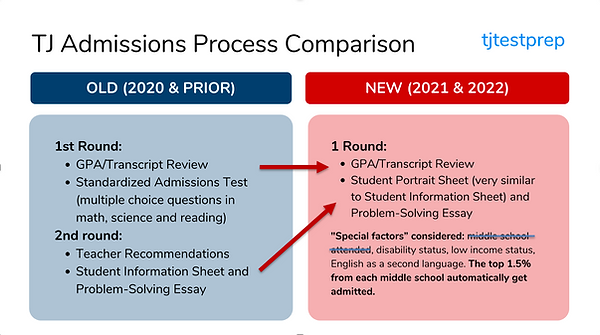top of page

TJ Admissions Process Simplified
Amid dozens of changes, thousands of media articles, court challenges, etc, many applicants and parents find themselves wondering where they can find a complete guide to the TJ Admissions Process. In keeping with our mission of taking the guesswork out of TJ Prep, here is our summary of how it all works:

bottom of page
.png)